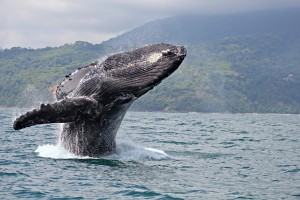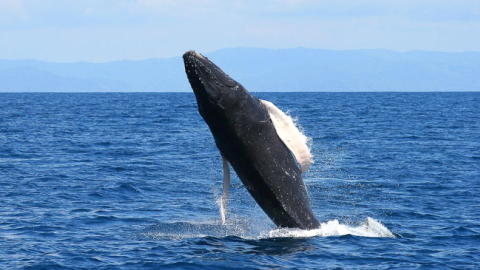Costa Rica Travel News – Costa Rica’s southern region is a remote pristine paradise, removed and different from the rest of the country! The waters around Golfo Dulce are calm and bright blue. They touch the Piedras Blancas National Park and the Osa Peninsula. The warm waters and tropical land attracts many species of wildlife. In the gulf area its common to see dolphins playing and marine birds diving for a catch.
 This month we can expect the already amazing region to get even busier because Humpback Whale season is starting! Golfo Dulce is vital to the survival of the Humpbacks, according to CEIC, the Center of Cetacean Investigation of Costa Rica. Every year the animals come to this area to breed and give birth. One beach in the area, Ballena National Park, was named after them!
This month we can expect the already amazing region to get even busier because Humpback Whale season is starting! Golfo Dulce is vital to the survival of the Humpbacks, according to CEIC, the Center of Cetacean Investigation of Costa Rica. Every year the animals come to this area to breed and give birth. One beach in the area, Ballena National Park, was named after them!
These fascinating creatures travel up to 5,000 miles each way! They are the farthest-migrating animals in all the world! The whales from the Northern Hemisphere come from Alaska and British Columbia. Those from the Southern Hemisphere come from Antarctica. August through October are the most popular months for whale watching in Costa Rica.
The CEIC and Earthwatch are connecting to take protective measures for the endangered whales, their feeding grounds, and the safety of their breeding areas. A CEIC researcher commented that there is an “urgent need to create connectivity between different marine protected areas to maximize the effectiveness in the protection of species and resources.”
With their efforts, we can expect to enjoy whale watching for many years to come. These acrobatic animals are known for their squeaky songs and smooth movements near the top of the water.
If you want to visit the Golfo Dulce area look into Playa Nicuesa Rainforest Lodge, known for eco-friendly measures taken to protect the whales. It’s located on a private reserve on the edge of the National Park. They received a TripAdvisor Certificate of Excellence for their sustainability efforts.

